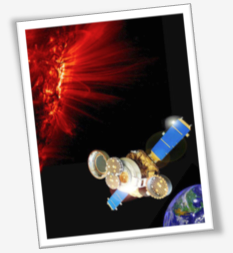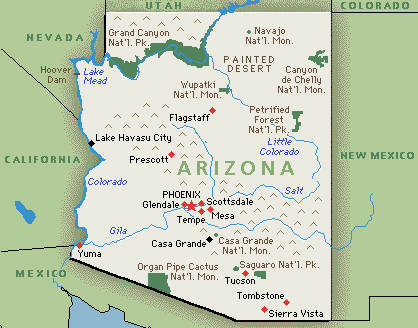 Dr. James Gleason, project scientist for NPP, explains what it takes for a satellite to stay in orbit, why there are different types of orbits, and why satellites orbit Earth at different altitudes depending on their purpose.
Dr. James Gleason, project scientist for NPP, explains what it takes for a satellite to stay in orbit, why there are different types of orbits, and why satellites orbit Earth at different altitudes depending on their purpose.
NASA Mission Suggests Sun and Planets Formed Differently
 Analysis from NASA’s Genesis mission indicates our sun and its inner planets may have formed differently than previously believed.
Analysis from NASA’s Genesis mission indicates our sun and its inner planets may have formed differently than previously believed.Expedition 31 and 32 In-flight Education Downlink Opportunity
 During Expeditions 31 and 32, crew members aboard the International Space Station will participate in downlinks. Downlinks are approximately 20 minutes in length and allow students and educators to interact with astronauts through a question and answer session. Downlinks afford education audiences the opportunity to learn firsthand from astronauts what it is like to live and work in space. Downlinks are broadcast live on NASA TV and are streamed on the NASA website. Because of the nature of human spaceflight, organizations must demonstrate the flexibility to accommodate changes in downlink dates and times.
During Expeditions 31 and 32, crew members aboard the International Space Station will participate in downlinks. Downlinks are approximately 20 minutes in length and allow students and educators to interact with astronauts through a question and answer session. Downlinks afford education audiences the opportunity to learn firsthand from astronauts what it is like to live and work in space. Downlinks are broadcast live on NASA TV and are streamed on the NASA website. Because of the nature of human spaceflight, organizations must demonstrate the flexibility to accommodate changes in downlink dates and times.NASA Endeavor Science Teaching Certificate Project Applications Due Oct 31

NASA Now: States of Matter: Finding and Using Water on the Moon
 In this NASA Now episode, Dr. Ed Ethridge, a ceramics engineer at Marshall Space Flight Center in Huntsville, Ala.,explains his research on extracting water from lunar soil, or lunar regolith.
In this NASA Now episode, Dr. Ed Ethridge, a ceramics engineer at Marshall Space Flight Center in Huntsville, Ala.,explains his research on extracting water from lunar soil, or lunar regolith.
Learn how future explorers could use microwaves to extract water from soil on the moon, Mars or an asteroid.
Link to the NES Virtual Campus home page.
Unprecedented Orbital Observations of Mercury Reveal Surface Details
 After only six months in orbit around Mercury, NASA’s MESSENGER spacecraft is sending back information revolutionizing the way scientists think about the innermost planet. Analysis of data from the spacecraft shows, among other things, evidence of widespread flood volcanism; the first close-up views of Mercury’s “hollows”; the first direct measurements of the chemical composition of Mercury’s surface; and the first global inventory of plasma ions within Mercury’s space environment.
After only six months in orbit around Mercury, NASA’s MESSENGER spacecraft is sending back information revolutionizing the way scientists think about the innermost planet. Analysis of data from the spacecraft shows, among other things, evidence of widespread flood volcanism; the first close-up views of Mercury’s “hollows”; the first direct measurements of the chemical composition of Mercury’s surface; and the first global inventory of plasma ions within Mercury’s space environment.Solar Flares: What Does It Take to Be X-Class?
Solar flares are giant explosions on the sun that send energy, light and high-speed particles into space. These flares often are associated with solar magnetic storms known as coronal mass ejections, or CMEs. The number of solar flares increases approximately every 11 years. The sun currently is moving toward another solar maximum, likely in 2013. That means more flares will be coming — some small and some big enough to send their radiation all the way to Earth.
Weekend Meteor Shower
 Earth is about to pass through a stream of debris from Halley’s comet, source of the annual Orionid meteor shower. Forecasters expect more than 15 meteors per hour to fly across the sky on Saturday morning, Oct. 22, when the shower peaks.
Earth is about to pass through a stream of debris from Halley’s comet, source of the annual Orionid meteor shower. Forecasters expect more than 15 meteors per hour to fly across the sky on Saturday morning, Oct. 22, when the shower peaks.
For more information visit http://science.nasa.gov/science-news/science-at-nasa/2011/20oct_orionids/
Arizona Students Relate Home to Mars
 NASA Explorer Schools educator Kaci Heins and students from Arizona participated in a lesson based on the Mars Student Imaging Project. Her students studied geographic features on Earth and then used NASA photos to learn more about geographic features on Mars. Students applied skills such as measurement and how to document observations as well as reinforcing their understanding of latitude and longitude.
NASA Explorer Schools educator Kaci Heins and students from Arizona participated in a lesson based on the Mars Student Imaging Project. Her students studied geographic features on Earth and then used NASA photos to learn more about geographic features on Mars. Students applied skills such as measurement and how to document observations as well as reinforcing their understanding of latitude and longitude.NASA Now: The Speed of Sound
 Learn about sonic booms and the speed of sound from aerospace engineer George Hatcher as he shares his excitement of physics in his description of how the space shuttles reentered Earth’s atmosphere. This program available on the NES Virtual Campus beginning Oct. 17, 2011.
Learn about sonic booms and the speed of sound from aerospace engineer George Hatcher as he shares his excitement of physics in his description of how the space shuttles reentered Earth’s atmosphere. This program available on the NES Virtual Campus beginning Oct. 17, 2011.